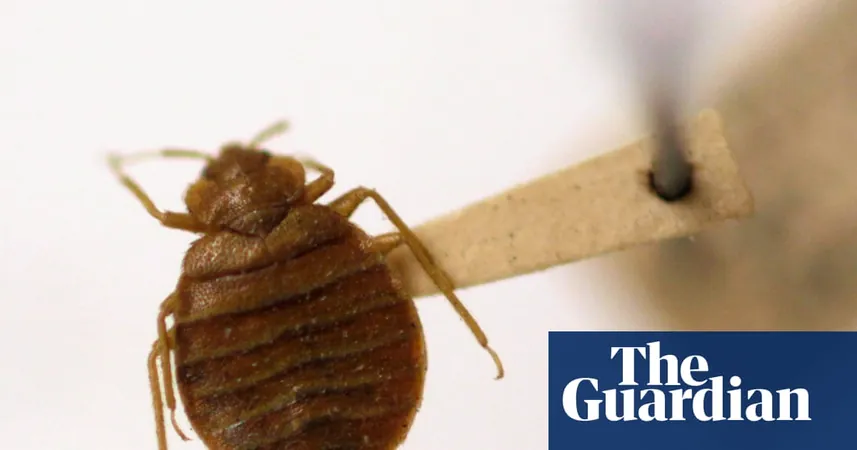
The Surprising Connection Between Humans and Bedbugs: A Historical Perspective
2025-05-28
Author: Yan
From Dinosaurs to Cities: The Rise of Bedbugs
They survived the extinction event that wiped out the dinosaurs, but bedbugs were fading into oblivion — until cities emerged, causing their populations to skyrocket. According to recent research, these pesky parasites thrived on the close quarters of human settlements.
A Genetic Legacy of Bedbugs
Dr. Warren Booth, an urban entomologist at Virginia Tech, reveals that the deep-rooted connection between bedbugs and humans saw the first urban pest emerge alongside the rise of civilization. "When we convened in cities, we brought our own bedbugs, which led to a rapid increase in their numbers as cultures expanded globally," Booth explained.
Tracing Bedbug History Through DNA
In groundbreaking research published in *Biology Letters*, scientists examined the DNA of 19 bedbugs found in the Czech Republic. Nine of these bugs were linked to humans, while the others resided in bat roosts. The findings indicate that both groups were experiencing a population decline about 45,000 years ago, but diverged significantly as humans began to settle down.
The Civilization Catalyst: How Cities Changed Everything
As early as 12,000 years ago, the population of human-associated bedbugs flattened out, only to surge dramatically around 8,000 years back. This surge coincided with the emergence of the world’s first cities, originating from agricultural settlements like Çatalhöyük in modern-day Turkey, which housed thousands of people around 9,000 years ago, and Uruk in ancient Mesopotamia, home to 60,000 residents roughly 5,000 years ago.
An Ancient Evolution: Bedbugs and Their Human Hosts
Bedbugs evolved over 100 million years ago, initially feeding on mysterious hosts before switching to bats and eventually humans. As Professor Michael Siva-Jothy from the University of Sheffield notes, "The evolutionary path of both humans and bedbugs has been deeply intertwined for millennia." However, Siva-Jothy expresses caution regarding the scope of the study, using a small sample size from only one country, and suggests that other parasites, like head lice, which have been a nuisance for over a million years, might also stake their claim as ancient urban pests.
Conclusion: Reconsidering Our Relationship with Bedbugs
As our understanding of bedbugs' evolutionary journey unfolds, their rise alongside human civilization challenges us to reconsider our relationship with these ancient pests. From the shadows of history to the into our homes, bedbugs remind us of the profound impact of urban life on our environment — one that we are still grappling with today.

 Brasil (PT)
Brasil (PT)
 Canada (EN)
Canada (EN)
 Chile (ES)
Chile (ES)
 Česko (CS)
Česko (CS)
 대한민국 (KO)
대한민국 (KO)
 España (ES)
España (ES)
 France (FR)
France (FR)
 Hong Kong (EN)
Hong Kong (EN)
 Italia (IT)
Italia (IT)
 日本 (JA)
日本 (JA)
 Magyarország (HU)
Magyarország (HU)
 Norge (NO)
Norge (NO)
 Polska (PL)
Polska (PL)
 Schweiz (DE)
Schweiz (DE)
 Singapore (EN)
Singapore (EN)
 Sverige (SV)
Sverige (SV)
 Suomi (FI)
Suomi (FI)
 Türkiye (TR)
Türkiye (TR)
 الإمارات العربية المتحدة (AR)
الإمارات العربية المتحدة (AR)